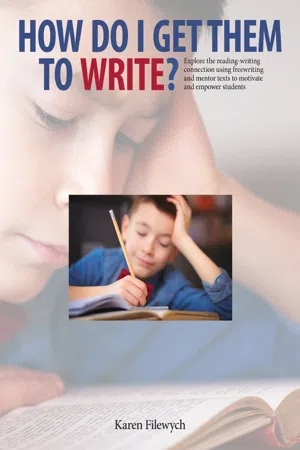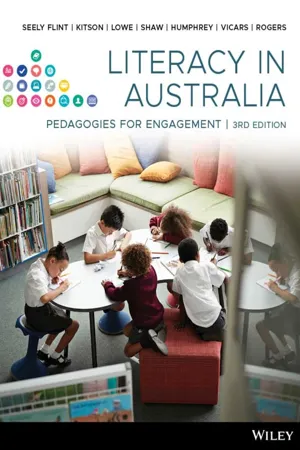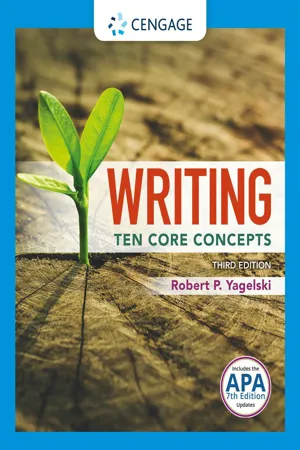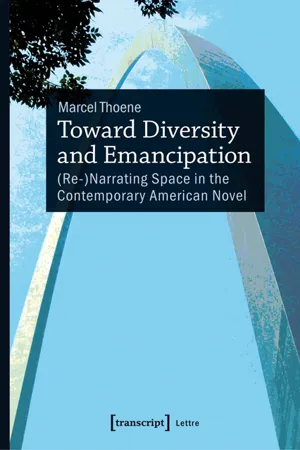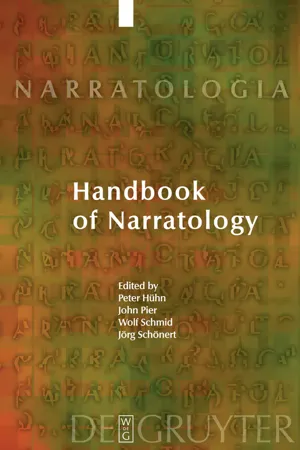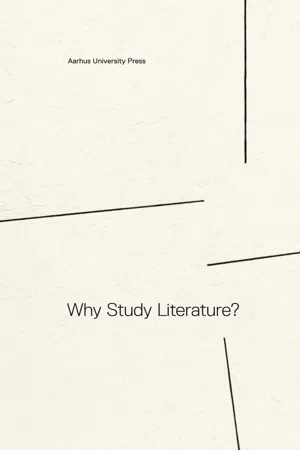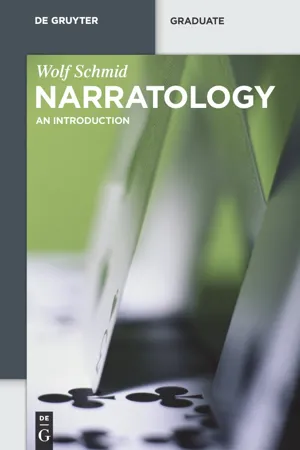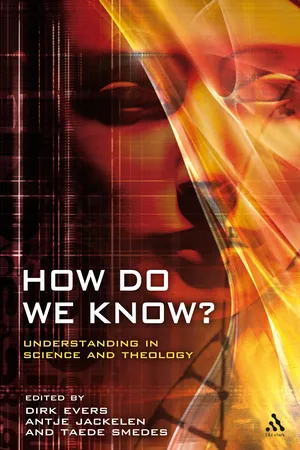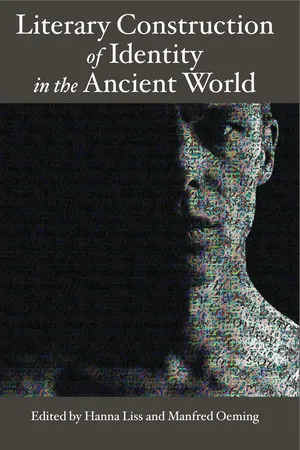Literature
Narrative Literature
Narrative literature refers to written works that tell a story or recount a series of events. It encompasses various genres such as novels, short stories, epics, and folk tales, and often focuses on character development, plot, and setting. Through the use of narrative techniques, authors convey themes, emotions, and messages to engage and captivate readers.
Written by Perlego with AI-assistance
Related key terms
1 of 5
12 Key excerpts on "Narrative Literature"
- eBook - PDF
Women and the Authority of Scripture
A Narrative Approach
- Sarah Heaner Lancaster(Author)
- 2002(Publication Date)
- Trinity Press International(Publisher)
Narrative is often used to identify a genre of literature that is distinct from other genres. It is generally recognized that narrative is prose rather than 98 NARRATIVE IN HUMAN LIFE 99 poetry, but beyond that simple description is little consensus about what kind of prose narrative is. Narrative may be identified as a work with a plot, but epic poems and sometimes other forms of poetry have plots also. Further-more, not all works with plots (a drama, a film) fall under the category of narrative as it is usually conceived in literary studies because they show rather than tell. Robert Scholes and Robert Kellogg, however, treat film as a form of telling because the director narrates through choices of how to present events. They do not consider drama to be such a telling because mem-bers of the audience have the freedom to look at many different things on the stage. As Gerard Genette uses it, the word narrative refers, not to a genre, but to one of three levels within a single work. In his usage, story refers to events (real or fictitious), narrative refers to the oral or written statements that tell about those events, and narrating refers to the act of telling itself. 1 Although most often plot is considered an essential ingredient of narrative, the two terms can also be distinguished, so that under one possible view narrative states temporal events (The king died, and then the queen died) while plot shows the causal relation between those events (The king died, and then the queen died of grief). 2 Even in the field that studies it the most, narrative turns out to be a slippery term. What does seem to be clear in literary studies is that narrative must recount an event or events (real or fictitious); otherwise, the prose is merely description. Although narrative has been conceived in a variety of ways, the role of events provides a starting point for identifying the way that a narrative works. - eBook - PDF
How Do I Get Them to Write?
Explore the reading-writing connection using freewriting and mentor texts to motivate and empower students
- Karen Filewych(Author)
- 2017(Publication Date)
- Pembroke(Publisher)
It is not that we want (or expect) all of our students to become authors, but through the process of narrative writing, students can practise and refine their own writing skills and ultimately learn to appreciate the artistry in the texts they read. I find an excuse at every turn to read a picture book to my class no matter the age — literature offers such enriching experiences. In addition to serving as excellent models for our writing, literature can help us make connections, learn from the mistakes of others, gain empathy and compassion, acquire knowledge, and ultimately, define ourselves. We are able to time-travel to ancient Rome, we may be stranded on a deserted island, or we may find ourselves living in a world without color. Literature is a powerful teaching tool: instead of telling students that discrimination based on race is wrong, we can show them, using the expe-riences of others through story. The author creates memorable characters and Over the course of her career, Madeleine L’Engle wrote more than 60 books. Perhaps she is best known as the author of A Wrinkle in Time , which won the John Newbery Medal and is often referred to as a classic for children. 58 Narrative Writing through our imaginations we can explore and evaluate circumstances to deter-mine our values and beliefs. Through literature, we can try on different hats and experiment with vari-ous roles through the characters we encounter. For example, at about the same time, I read The Art of Racing in the Rain , a narrative told from the point of view of a dog, and Room , told from the point of view of a five-year-old. Both books stayed with me long after I closed their covers. Consciously or unconsciously, we are changed by the words we read: our exposure to the ideas, experiences, and thoughts of others can uncover, shape, confirm, and sometimes even alter who we are as individuals. - eBook - PDF
- H. Porter Abbott(Author)
- 2020(Publication Date)
- Cambridge University Press(Publisher)
2) Loose and generally recognizable: These are the longer structures that we call narratives, even though they may contain much nonnarrative material. Most of these come in recognizable genres: tragedy, comedy, epic, short story; and an abundance of other genres of film, drama, poetry, and prose, either fictional or nonfictional. No one has yet come Defining Narrative 14 up with a precise way of determining when any long text no longer qualifies as narrative in this larger sense and should be called something else. But usually the defining characteristic we look for at this level is narrative coherence. You could say that, for such a text, narrative is the dominant, a concept that Roman Jacobson defined as “the focusing component of a work of art” that allows us to respond to it as, in this case, a narrative (1935: 41). 2 But here, too, there can be fuzziness, since there are texts, as Brian McHale argues, that can “yield different dominants” depending on how we read them (1987: 6). 3 Going back to the compact form of narrative, the definition that I have chosen is controversial in yet another way, since there are scholars who would also dispute my other term – “representation” – as much too broad. In the first edition of Gerald Prince’s Dictionary of Narratology (1987), he wrote that “[A] dramatic performance representing (many fascinating) events does not constitute a narrative …, since these events, rather than being recounted, occur directly on stage. - eBook - PDF
- Amy Seely Flint, Lisbeth Kitson, Kaye Lowe, Kylie Shaw, Susan Feez, Sally Humphrey, Mark Vicars(Authors)
- 2019(Publication Date)
- Wiley(Publisher)
As well as appreciating, responding and evaluating literature to develop ‘literary literacy’ (Kitson, 2017), students need to examine literature for how key elements of setting, plot, characterisation, theme and mood work with language devices to create particular meanings and effects. This involves the need for students to ‘understand, interpret, discuss and evaluate how certain stylistic choices can create multiple layers of interpretation and effect’ (ACARA, 2018). The next section will explore key features of narrative texts, along with different types of language devices used in both narrative and poetry. 350 Literacy in Australia Key features of literary texts Narrative or storytelling is a way in which people make sense of their lives and experiences. ‘We dream in narrative, daydream in narrative … we make up stories about ourselves and others, about the personal as well as the social past and future’ (Hardy, 1975, p. 14). The narrative structure is the way in which we order and construct our world — it is a ‘primary act of mind’ (Hardy, 1975, p. 4). Barthes (1977) highlights the presence of narrative in fables, myths, legends, history, novels and tales, and even in more visual forms such as comics, cinema and news broadcasts. So, as a valued genre that we should be examining with students, what are some of the key features that make up a narrative? Table 10.4 lists some of the key features of a narrative — the setting, characterisation, the plot or structure of the text, theme or subject matter, and point of view (voice). - Robert Yagelski(Author)
- 2021(Publication Date)
- Cengage Learning EMEA(Publisher)
Understanding Narrative Writing 487 Monkey Business Images/Shutterstock.com 15 READ THE OPENING PARAGRAPHS of Chapters 2, 8, and 12 in this textbook, and you’ll notice that they all begin the same way: with a story. That’s no accident. Stories are an important way to convey information, explore ideas, and make sense of our experiences. We use them every day in many different ways: ■ A classmate tells you a story about an experience with a professor who teaches a course you’re thinking about taking. ■ A patient tells a doctor the story of how he was injured. ■ A business manager uses anecdotes in a report to her boss to explain the company’s struggles to develop a new market for its products. ■ A politician describes an event from her childhood to show voters that she understands their concerns. ■ A relative tells you about a trip he took to another country. Historians use narrative to organize and analyze the past to help us understand who we are and how we got here. Scientists use narrative to explain the natural world (see Sidebar: “Narrative in Science” on page 488). Most religious texts are narratives—for example, the parables in the Christian Bible, Zen koans, and the creation myths of Native American peoples. Stories help us make sense of complicated events or phenomena. They give shape to our experiences. They turn the abstract (the pain of loss, for example) into the concrete (a story about losing a beloved relative). Through stories we impose order on the chaos of life. In fact, some scholars believe that narrative is as fundamental to human life as language itself. The influential scholar Jerome Bruner has written, “We seem to have no other way of describing ‘lived time’ save in the form of a narrative” (Bruner, Jerome. “Life as Narrative.” Social Research, vol. 54, no. 1, Spring 1987, pp. 11–32.). Narrative, then, might be understood as a tool by which we grasp reality.- eBook - PDF
Toward Diversity and Emancipation
(Re-)Narrating Space in the Contemporary American Novel
- Marcel Thoene(Author)
- 2016(Publication Date)
- transcript Verlag(Publisher)
This distance, the move away from the two dichotomous edges to the discursive center, which bears the potential of making a story, potentially forms a narrative inasmuch as we follow along the lines of the trajectory struck by the protagonist in the story. 2) The second working definition to be carved out must be that of narrative. The term is componentialized into two basic realms: the cultural and the literary, or the historical and the fictional. Cultural narratives have been treated as indispensable for the formation of cultural identity on the above (cf. Betsworth 1990: 15). They function as prisms organizing the past so as to allow for interpretations for the present. As Lawler formulates, the “underlying assumption is that narratives are ‘social products produced by people within the context of specific social, historical and cultural locations.[...] Rather, they are interpretive devices, through which people represent themselves, both to themselves and to others.’” (Lawler qtd. in Mildorf 2010: 234) In a similar manner, Hayden White (2010) states: “This research suggests that far from being a natural medium in which events, whether imaginary or real, can be represented with perfect transparency, narrative is an expression in discourse of a distinct mode of experiencing and thinking about the world, its structures and its processes.” (274) An additional, important factor is to be discovered in the function of space and spatiality in the formation of a cultural memory, which eventually re-narrates and passes on these identity-constituting stories to the following generations. As Catherine Bernard writes, using country houses in British literature as example, “the great country houses so central to many a realist plot and to many twentieth-century novels may also be read as emblematic of the mournful mnemonics of culture and fiction. - eBook - PDF
- Peter Hühn, John Pier, Wolf Schmid, Jörg Schönert, Peter Hühn, John Pier, Wolf Schmid, Jörg Schönert(Authors)
- 2009(Publication Date)
- De Gruyter(Publisher)
Narration in Poetry and Drama Peter Hühn & Roy Sommer 1 Definition Narration as a communicative act in which a chain of happenings is meaningfully structured and transmitted in a particular medium and from a particular point of view underlies not only narrative fiction proper but also poems and plays in that they, too, represent temporally organized sequences and thus relate “stories,” albeit with certain genre-specific differences, necessarily mediating them in the manner of pres-entation. Lyric poetry in the strict sense (and not only obviously narra-tive poetry like ballads or verse romances) typically features strings of primarily mental or psychological happenings perceived through the consciousness of single speakers and articulated from their position. Drama enacts strings of happenings with actors in live performance, the presentation of which, though typically devoid of any overt present-ing agency, is mediated e.g. through selection, segmentation and ar-rangement. Thanks to these features characteristic of narra-tive, lyric poems as well as plays performed on the stage can be profitably an-alyzed with the transgeneric application of narratological categories, though with poetry the applicability of the notion of story and with drama that of mediation seems to be in question. 2 Explication Transgeneric narratology proceeds from the assumption that narra-tology’s highly differentiated system of categories can be applied to the analysis of both poems and plays, possibly opening the way to a more precise definition of their respective generic specificity, even though (lyric) poems do not seem to tell stories and stories in dramas do not seem to be mediated (but presented directly). As far as poetry is con-cerned, the following argument concentrates on lyric poetry in the nar-row sense: that narratological categories are generally applicable to narrative verse is obvious. - eBook - PDF
- Patricia G. Kirkpatrick(Author)
- 1988(Publication Date)
- Sheffield Academic Press(Publisher)
The same story may realize itself in different genres, and therefore 'what is a tale for one culture may be an origin legend for another'. 80 Finally, the importance of context should not be underestimated: Rooted in their social environment stories are extremely sensitive to group and individual attitudes; the greater their popularity, the greater their inconsistency. They have no 'final' form. 81 2. Folk Narrative and the Biblical Text If the performance aspect of oral composition and transmission is the final determining factor for genre categories then it can have very little relevance for the study of written texts. In other words it is necessary to make a distinction between oral and written genres. A particular written form may have similar features to its oral counterpart, but without the aspect of performance it loses an essential characteristic which prevents us from viewing 'the forms of verbal art the way native speakers do'. 82 Whereas this may be pertinent to the study of present-day folk traditions, the genres biblical scholars deal with have achieved a 'frozen state' by virtue of their written form. Although Gunkel attempted to isolate their salient characteristics and compare them with those of later narrative forms such as the folktale and the legend, this was inadequate for establishing the original oral composition. 83 Recently the work of D. Irvin 84 has yielded some interesting results in the area of biblical prose narrative analysis, by utilizing S. Thompson's Motif Index of World Folklore. Irvin's aim was to isolate and identify not the motifs found in ancient Near Eastern texts, but rather the 'plot motifs' which are similar to those in certain 3. Folklore Studies and the Patriarchal Narratives 91 designated messenger stories in Genesis. For Irvin a plot motif is an element within the plot which moves the story forward a step, and constitutes one type of motif found within the Motif Index. - eBook - PDF
- Jan Alber, Kraglund, Rikke Andersen Kraglund, Stefan Iversen, Louise Brix Jacobsen, Reestorff, Camilla Møhring Reestorff, Nielsen, Henrik Skov Nielsen, Jan Alber, Kraglund, Rikke Andersen Kraglund, Stefan Iversen, Louise Brix Jacobsen, Reestorff, Camilla Møhring Reestorff, Nielsen, Henrik Skov Nielsen, Jan Alber, Rikke Andersen Kraglund, Stefan Iversen, Louise Brix Jacobsen, Camilla Mohring Reestorff, Henrik Skov Nielsen(Authors)
- 2011(Publication Date)
- Aarhus University Press(Publisher)
More specifically, my object is fiction, though I mean fictional narrative in a sense that accommodates not only the novel, but the drama (and indeed film), and a great deal of poetry too. Literary fiction, for my purposes here, is defined both etymologically (written fiction) and honorifically (fiction it is possible to credit as a significant contribution to culture, rather than just a symptomatic cultural product); at the same time, however, I situate this narrowly-defined object of study within a series of progressively more inclusive context – that is, fictions in general, narrative discourse in general, and narrative as a cognitive faculty. The recursive relationship between these contexts secures a significant continuity between literature and the broad reaches of scientific understanding, while the distinctive contribution of literary study is provided for by the re-inflection of the concept of narra-tive with each narrowing and refinement of the frame of reference. Finally, in speaking of the “force” of fictions I am proposing to make some play with the relation between the notions of “force” and “value”, extrapolating somewhat from the framework of speech act theory in order to emphasize a performative quality of literary narrative, which arises out of the recursive logic I am proposing, and which can be extrapolated one step further, to the activity of study itself. My thesis, then, is that the importance of literary fictions as objects of study can be understood to follow from the status of such fictions as the most highly elaborated instances of a mode of cognition that lies at the heart of what it is to be human (the human, I mean, as a social and trans- 236 Humanity ◀ contents cultural construct, rather than simply the species homo sapiens, though I am interested in the relation between the two). - eBook - PDF
- Wolf Schmid, Alexander Starritt(Authors)
- 2010(Publication Date)
- De Gruyter(Publisher)
The least complicated terminological way to represent our findings is to refer to narrative in the broader sense simply as “narrative,” while narrative in the narrower sense can be sensibly referred to with the term “mediated.” The theory presented in this book refers to those texts in which the classical concept of narrativity coincides with the structuralist one. Its sub-ject matter will therefore be literary texts that present a story and thereby represent, more or less explicitly, the mediating authority of a narrator. (This certainly does not mean that most of the categories handled cannot be applied to narrative texts in the broader sense.) The typology of texts is illustrated in the following diagram (the mass of mediated narrative texts on which the present book concentrates has been emphasized with a double border; the remaining text types, discursive, edifying, didactic etc. texts, are not further differentiated): Texts Narrative texts (in the broader sense) = represent a story Descriptive texts = represent states Remaining texts Mediated narrative texts (= narrative texts in the narrower sense) The story is told by a narrator. Mimetic narrative texts The story is portrayed with-out a mediating narrative auth-ority. This diagram is a modification of Seymour Chatman’s well-known model (Chatman 1990, 115), in which narrative texts are subdivided into “diegetic texts, recounting an event with the mediation of a narrator,” and “mimetic texts, enacting the event without a mediation.” 11 11 The words diegetic and mimetic are meant here in the sense used by Plato, whose Republic (III, 392d) distinguishes between diegesis (= pure narration) and mimesis (= imitation of the 8 I. Features of narrative in fiction d) Events and eventfulness Literary theory must do more than just register the presence of changes of state. Even the shortest of stories, not to speak of novels on the scale of Tol-stoy’s War and Peace , will represent a vast number of changes. - eBook - PDF
How Do We Know?
Understanding in Science and Theology
- Dirk Evers, Antje Jackelen, Taede Smedes, Dirk Evers, Antje Jackelen, Taede Smedes(Authors)
- 2010(Publication Date)
- T&T Clark(Publisher)
The aim for these researchers is to approach literature from a Darwinian perspective and bring literary studies in as one area of evolu-tionary theory (Wilson & Gottschall 2005, Barash & Barash 2005). This page intentionally left blank 14 ‘Let Me Tell You a Story’: Narrative and Meaning in Science and Religion John A. Teske I will tell you something about stories . . . They aren’t just entertainment. Don’t be fooled. They are all we have, you see, all we have to fight off illness and death. L. M. Silko One of the ways to distinguish between understanding in science and in religion is provided by Jerome Bruner’s (1986, 1990) distinction between paradigmatic and narrative modes of understanding. The paradigmatic mode involves synchronic understanding via logical proof, empirical observation, and causal explanation, putatively more characteristic of science. The narrative mode involves diachronic understanding via storied accounts of the ‘vicissitudes of human intentions’ organized in time, explanations not being causal, but in terms of believable narratives of actors (human and otherwise) striving to do things over time. The latter mode would be more characteristic of novelists or poets than of scientists or logicians, and arguably more characteristic of religion. That religion is about propositional beliefs is a canard regularly put forth by anti-religious polemicists attempting to cast religion as paradigmatically defective, such as Richard Dawkins (2006), Daniel Dennett (2006), Sam Harris (2004), and Christopher Hitchens (2007). On the other hand, Owen Flanagan (2007) has recently pointed out that religious views can cause the difficulty themselves (and for any who are not on board with their particular tradition, among the world’s diversity) when they assert that their story is true and authoritative. - eBook - PDF
Literary Construction of Identity in the Ancient World
Proceedings of the Conference Literary Fiction and the Construction of Identity in Ancient Literatures: Options and Limits of Modern Literary Approach
- Hanna Liss, Manfred Oeming(Authors)
- 2010(Publication Date)
- Eisenbrauns(Publisher)
81 Following the 1963 decision by the U.S. Supreme Court to ban the devotional reading of Bible in public schools, interest in teaching the Bible in literature (that is, discussing literature that alludes to bib- lical texts) and teaching the Bible as literature had strongly increased in the American educational system. The various essays gathered in Lit- erary Interpretations of Biblical Narratives meet this interest. Although there are three studies on New Testament texts, the first volume mainly compiles literary analyses of Old Testament passages from Genesis, Ex- odus, the books of Judges and Ruth, the characters of Elijah, Elisha, and Jonah, as well as a study of the books of Isaiah, Job, and Ecclesiastes. This volume understood itself to be a pioneering venture into rela- tively uncharted territories, because the study of the Bible as literature 79. Compare Booth, Rhetoric of Fiction, 70–75. 80. Thus the English equivalent suggested by Sternberg, Poetics of Biblical Narrative, 52–53. 81. K. R. R. Gros Louis, J. Ackerman, and T. Washaw, eds., Literary Interpretations of Biblical Narratives, vol. 1 (Nashville: Abingdon, 1974). Joachim Vette 38 had not yet produced a significant body of scholarship. 82 The con- tributors to these volumes, the majority of whom belonged to English departments, understood their work as a decisive shift away from what they saw to be the major preoccupation of biblical scholars: the quest for the historical reality behind the biblical text. Instead of play- ing the biblical texts against a supposed underlying historical reality, these authors affirmed that the text itself posits a reality to be under- stood and interpreted in its own right, primarily in terms of its literary craftsmanship. 83 This paradigm shift was exemplified by the term literary criticism.
Index pages curate the most relevant extracts from our library of academic textbooks. They’ve been created using an in-house natural language model (NLM), each adding context and meaning to key research topics.

